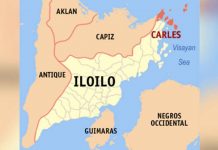ILOILO City – The University of the Philippines Visayas (UPV) formed a taskforce that will assist in the needed response for the oil spill in Caluya, Antique.
According to Dr. Rex Sadaba, who chairs the taskforce, they will be divided into three teams – Biophysical Team, Socio-Economic and Health Team, and Communications and Coordination Team.
Each team will be composed of UPV experts in various fields such as oil spill containment, fisheries, and marine biology who will be involved in the post-spill assessment in the affected areas.
Sabada explained their task is to plan for appropriate response, come up with proposals for the assessment and look for funding to perform the assessment.
“We will provide science-based technical advice on the needs of the local government units (LGUs) in particular on how they perform their cleanup,” said Sabada.
He said they already issued a number of bulletins which contain guidelines for the cleanup workers.
“Kay kadamo gid sang nakita namon nga sala nga panglimpyo. This is to guide them with proper guidelines. We have another bulletin on how the affected areas will be cleaned but only for qualified responders or cleanup workers,” he added.
MT Princess Empress, owned by the RDC Reield Marine Services Inc., was carrying around 800,000 liters of industrial fuel en route to Iloilo from Batangas when it sank off the coast of Naujan, Oriental Mindoro on Feb. 28.
The oil spill spread up to the territorial waters of Caluya.
Sadaba said the owner of the vessel has yet to deploy its cleanup workers. For now the cleanup activities are being done through “Bayanihan,” primarily by the affected LGU.
No children, elderly, or pregnant women during cleanup
“There are children nga gapanglimpyo without even the necessary protection like mask and gloves,” Sadaba said.
Citing their experience in other oil spill incidents in the country, Sadaba stressed no children, elderly, or pregnant women should be allowed to do the cleanup.
He added the cleanup activity should only be done until 9 a.m. and after 3 p.m.
“Usually pwede pa ka extend (cleanup) until 10 a.m. kay from 10 a.m. to 3 p.m. grabe ang init, indi gid bagay nga ma-expose mo ang tawo although withered na ang oil dira, so medyo nag-evaporate na ang mga volatiles. Pero may nabilin pa na gihapon so kon ara da ang tawo kon mag-evaporate ang nabilin, ti, mahaklo which is not good sa health,” he further explained.
Sadaba said they wish to complete their task by middle of April this year but this will still depends on the availability of the budget.
“We have to assemble the team because it is going to be a big work considering the diversity of the marine habitants affected and the people within those areas. It takes some time and above all where do we get the funding,” he added.
Meanwhile, the rehabilitation of the mangroves and other marine habitats will only be done once there is already a complete picture of how extensive the damage of the oil spill is.
He noted, normally, the effects of the spill in the environment are more evident during the second to third month after the spill.
“For now, the priority is really to stop the spillage halin sa barko para wala na additional threat. So far ang laban nga oil nga naggwa for the first few days, majority na so far nag-landing na sa shoreline,” Sadaba added.
Based on the latest model by the UP Marine Science Institute (UP MSI), their projection is that it might need another 20 days to completely empty the tanker.
“But then again it will depend kay siempre, sa modeling man lang na siya. There are still so many factors to be considered. More or less, may idea lang ang mga LGUs to prepare sa possibility kon may nabilin pa gid man sa tanker,” Sadaba added./PN







